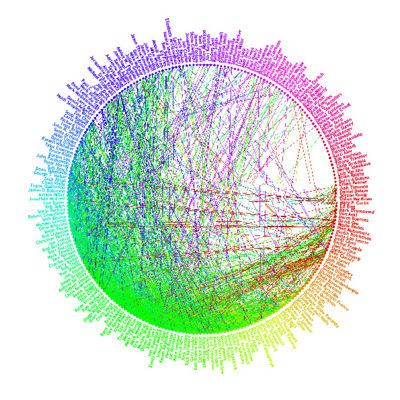Linking Between Versions
| OER Handbook for educators | |
|---|---|
| Share OER | Self- or third-party publishing? | Self-publishing | Third-party publishing | Linking Between Versions | Publishing Student Work | Accessibility | Perspectives |
With the possibility of high-bandwidth, low bandwidth, mobile and offline versions of a resource, keeping track of everything can seem overwhelming. At this point, it is worth noting you are not required to develop every single version of your OER. You may find that you don't have the time or knowledge to create the different versions. In those cases it is more important that an OER gets released than it is that all possible versions get released.
Most self-published OER display the high-bandwidth version prominently, with the others available separately. If there are only a few different types of downloads, you may want to consider listing them to the side (e.g. a video playing with links to the left). If you are publishing a complex OER yourself, you could consider multiple domains. For example, the high-bandwidth version might be www.myoer.net and the mobile version would be www.myoer.mobi.
Some large repositories have rules, or at least preferences, regarding how different versions should be displayed. Read the guidelines or contact them for more information before posting.
Linking between previous versions
To assist with localization and remix, it is recommended that you make high-quality versions in a lossless format available (see the format interoperability section for more information). There is no universal way to designate different versions of an OER. Some chose a number-decimal system (e.g. 1.2, 1.3.). Others simply choose to date each version (e.g. myOER 12 Jun 2008). As with version tracking for different bandwidth types, major repositories have their own system and you should consult with them before submission.
Deciding which versions to make available
When creating an OER, it is not uncommon to go through several different versions before publishing. Some of these major revisions are important to the OER because they represent a crucial project decision. Depending on the OER, some of these versions may be worth posting online. However, you do not want to discourage visitors and future localization and remixing, you will want to limit the number of versions you can make available.
Think of your OER and the major steps of development. Ask yourself whether it would be helpful to have the OER available at each of these major steps. The answer to that question may depend on how much effort an individual change might take. For example, say you created an instructional video about cells and added a new section about mitochondria. The video may or may not be radically different with the addition of this new section and it may be appropriate to make both versions available. On the other hand, other educators may be able to edit the mitochondria section out as well as any other section by using a video editor. So whether or not you make a previous version available depends on how much educational value you see in it and how that version will assist future localization and remixing. As a general rule, if you have over three previous versions of a resource published, there are too many available.
